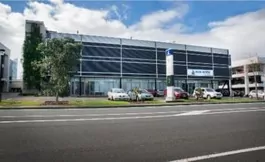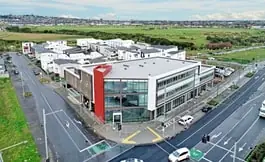Laser Vision Correction
Visual clarity redefined. Explore our Vision Correction solutions
Understanding vision correction
Vision correction refers to any procedure or treatment aimed at improving a person’s vision by correcting refractive errors or other visual impairments. Refractive errors occur when the shape of the eye prevents light from focusing directly on the retina, resulting in blurry or distorted vision.
What problems does laser eye surgery fix?
Normal vision (emmetropia) – Light rays are refracted by the cornea and the lens in such a way that the focal point is directly on the retina. Objects both near and far appear in sharp focus.
Nearsightedness (myopia) – Light rays are refracted by the cornea and the lens in such a way that the focal point is in front of the retina. It is the most common focusing problem treated by laser eye surgery. Depending on the degree of myopia, near objects appear in sharp focus while distant objects appear out of focus.
Astigmatism – The irregular curvature of the cornea causes the light rays to be refracted into multiple focal points and not just one. Depending on the extent of astigmatism, objects both near and far can appear skewed and distorted. Astigmatism may occur in conjunction with both near or far-sightedness.
Hyperopia (far-sightedness) – Hyperopia occurs when the eye is smaller than the ‘perfect eye’, causing images to be focused past the retina. Farsightedness is a distance vision problem although sometimes your near vision can be more blurred too.
Vision correction services
Cataract surgery
Cataract surgery is a safe and effective procedure that involves removing the clouded natural lens of the eye and replacing it with a clear artificial lens implant to restore clear vision.
Intraocular contact lens (ICL)
Although laser eye surgery is the most common way to gain freedom from glasses or contact lenses, some people’s eyes aren’t suitable due to high prescriptions or thin corneas. In these cases an implantable contact lens may be a better solution for their vision problems. All our ICL patients have achieved unaided vision of better than, or equal to, driving vision.
The ICL is a tiny contact lens that is placed inside the eye, not on top of the eye like normal contact lenses, to correct near or far (short or long) sightedness, with or without astigmatism. The lens is specially manufactured for your individual eye contours, so is highly customised. Our specialist can advise if ICL is the right choice for you.
Refractive lens exchange (RLEX)
If you started out needing reading glasses, and now find yourself more reliant on glasses all the time, then we often recommend an Intraocular Lens (also known as Refractive Lens Exchange – RLEX) as your best option.
This procedure is where the natural lens of your eye is removed and an artificial one attached in its place to correct refractive errors, offering clear vision at all distances, including near, intermediate, and far.
Intra-ocular lens (IOL)
There are now extremely sophisticated IOL’s available that can give you back your distance, intermediate and near vision. So you can read books, menus and mobile phones again just like you used to, without the need for glasses. It’s a bit like turning back the clock!
Diagnosis and treatment
Before being treated, you will need to be assessed by a specialist ophthalmologist who will examine the cornea and take precise measurements to determine the appropriate vision correction method.
Vision correction surgery isn’t safe or effective for certain people, so your specialist will also ask about your general health and other factors before recommending a course of treatment.



